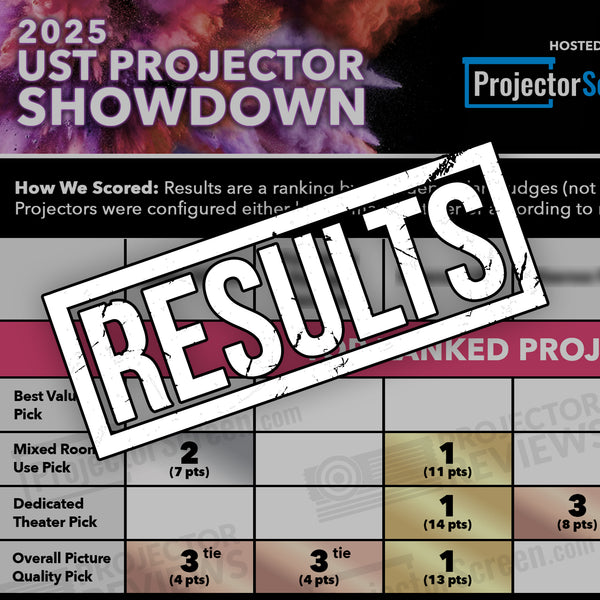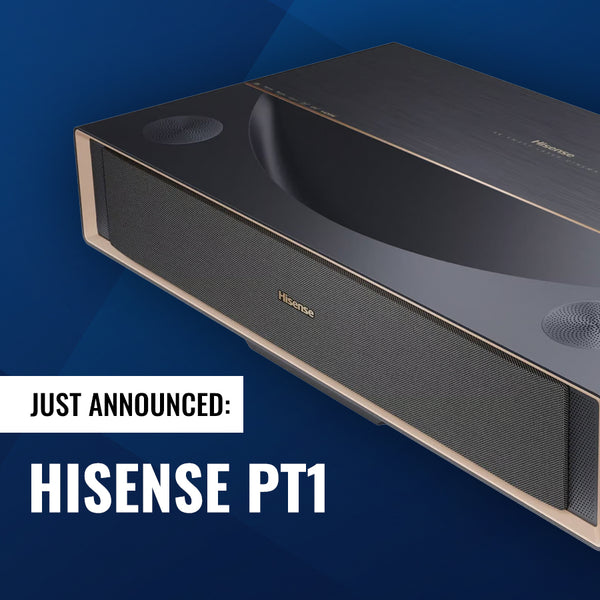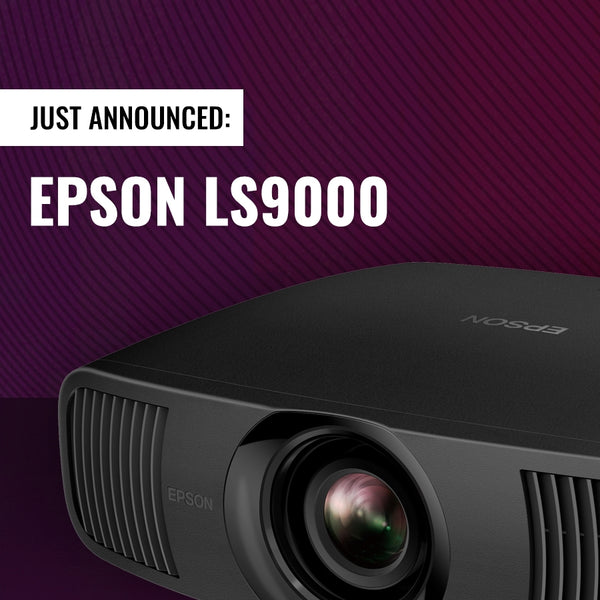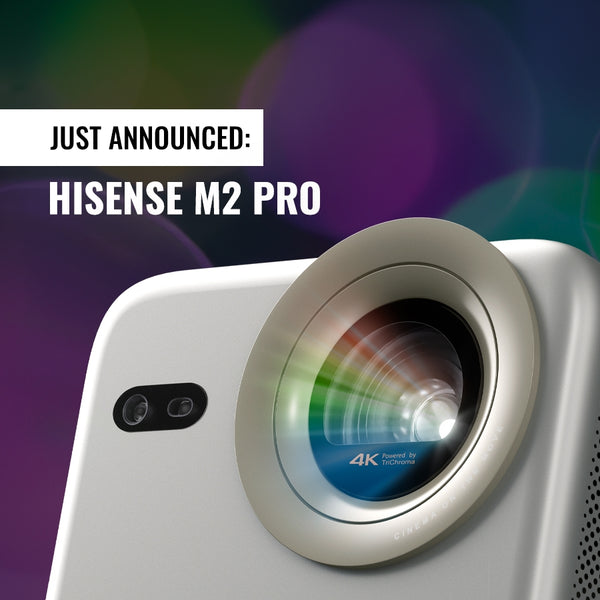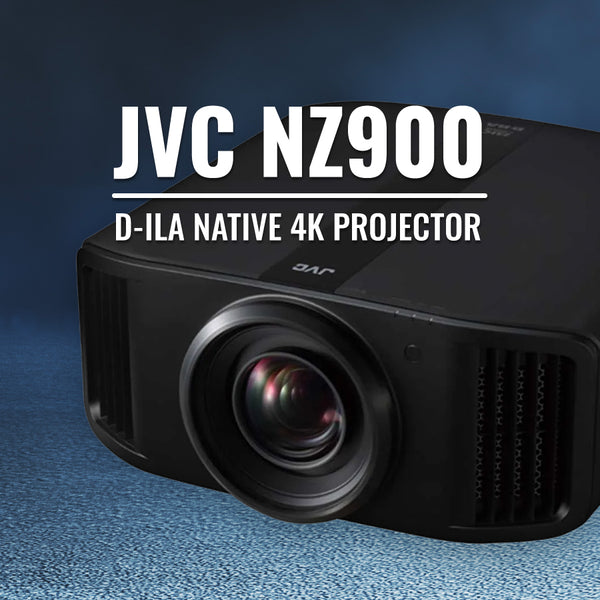Why Is A Projector Better Than A TV For Your Home Theater?
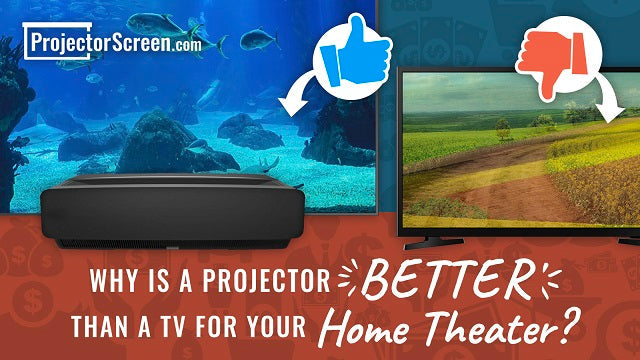
This question is probably among the most often asked in the projector and screen industry. While it is a fantastic question to explore, we would want to make one revision to this question before answering it and that is, it is not a matter of why, but rather a matter of WHEN is a projector better than a TV?
Now we’re not talking about small projectors that connect to your iPhone. When we say a projector, we mean a premium projector. A true home theater projector.
If your home theater system would benefit from a size that a standard TV can deliver (meaning approximately 88” or smaller) and there is no need to have speakers behind the visual display, nor is there a need to retract the visual surface when not in use, then by all means, a TV is a good investment for you. However, TVs can only go so large and they are all stationary by design – meaning they all take up wall-space. These reasons and more give projectors several major advantages over televisions.
Television vs. Projector Screen Size

The first advantage projector screens have pertains to size. It is unlikely that a viewer would ever feel truly engulfed in their viewing experience the way they do at a movie theater with a television screen. 88 inches may be large by TV standards, but it is small by projector screen standards. To drive home this concept even further we’ll point out that a screen that measures 120 inches diagonally appears roughly twice the size of an 88 inch screen.
Furthermore it's hard to find a flatscreen TV over 100 inches. Amazon doesn’t even have one!
Meanwhile you can get a home movie screen that’s over 200 inches! The only limiting factor is the size of your wall (and your budget). Which brings us to the next reason why projector screens are better than televisions: the price.
TV Price vs. Projector Screen Price
The fact of the matter is a high end tv is cheaper than a high end projector and screen combo. Up to a point.
You can get an 86” 4k tv for $1700. A true 4K projector and screen that size, would run you about $2000. But try finding a tv larger than that and you’re looking at spending $9000 on a 100 inch tv.
For a high quality 100 inch projection screen and 4k projector can cost as little as $2500. And with a projector you can go even bigger without exorbitantly increasing the price.
Projector Screens Take Up Less Space

One issue that a TV possesses has to do with the fact that there is no flexibility with regard to a TV’s utility. What we mean by this is that there is no way to make a TV disappear, and furthermore there is no way to have the wall-space which a TV occupies used for anything other than itself. This is not the case with a projector screen. A retractable motorized projector screen has the ability to be much more inconspicuous when not in use. It offers the dual benefit of being potentially larger, but also taking up less permanent space than a television, giving your space a better aesthetic.
Yet even in the case of a stationary (meaning fixed frame) projector screen there is still a space saving benefit when comparing against a TV. With an acoustic cinema screen you’re able to hide your surround sound speakers in the walls giving you a cleaner aesthetic to any media room.
Better Sound

LED and other flatscreen televisions have gotten flatter and flatter over time. One of the victims of shrinking the components is a substantial loss of sound quality coming from the internal speakers. With an ultra short throw projector you get a built-in soundbar that’s better than any speakers on an OLED, QLED, LCD, Plasma or any other kind of flatscreen.
Even with a regular throw projector, you still have the opportunity to get a better audio experience than on a large flatscreen TV. That has to do with the placement of your speakers and specifically your center channel speaker. In an ideal world your center channel speaker should be at the ear level of the listener. But with a television, you can’t place your speaker at the ideal level. It needs to be either above or below your display. It works fine but it’s not the paragon of acoustic perfection.
If you’re looking for the ideal soundscape, you can achieve it with a projector and screen combo thanks to acoustically transparent projector screens. An acoustically transparent screen offers a surface that allows sound to pass through it. This means you can use the same wall that the screen sits on to satisfy both the visual and audio portions of your home theater. In this scenario one is able to place speakers behind the screen. Enthusiasts often remark how the images come alive even more when the sound emanates from the image itself. This is certainly not a feature possible with TVs.
Portability
The third advantage is that projectors and screens can be portable. Obviously not all screens are portable, and it is doubtful you would want to take an uber-high end home theater projector out on the front lawn with you. But there are occasions where you may find a purpose to have a second outdoor projection screen for portable use that allows you to use your home projector in different applications, such as backyard movie night.
Easier To Break A TV
A television is a fragile piece of electronic equipment. Panels are very fragile, and can be easily physically damaged. A rogue video game control thrown in anger will crack any flatscreen.
If you don’t childproof your home theater, it’s not hard to picture your kid toppling the television or smashing it with a ball.
While not impervious from damage, a projector screen is a lot more rugged and less likely to have catastrophic damage. Sure it might get a scratch on it, but that scratch would crack an OLED display.
As a bonus, enjoy this compilation of people breaking their TVs.
Some final thoughts on why projectors are better than TVs
Our final thoughts on this matter are that TVs are great at what they do, but what they do is more limited than that of a projector – and certainly less movie theater like. There’s nothing quite like seeing a big screen in action. A lot of our customers have commented that they find their home theater setup as exciting and fulfilling as a legitimate movie theater experience. That is the true legacy of the projector.

